#Group tours of Scandinavia
Explore tagged Tumblr posts
Text
Tours to Scandinavia
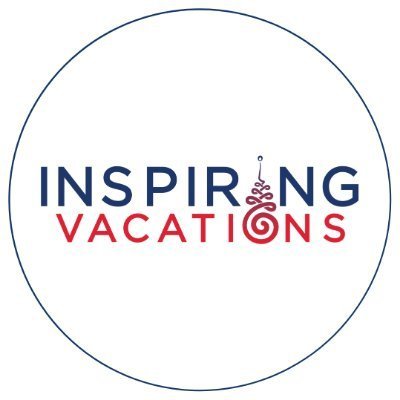
At Inspiring Vacations, we invite you to embark on a mesmerising journey through Scandinavia, where the enchanting beauty of the North unfolds in every tour we offer. Our meticulously crafted tours to Scandinavia promise a seamless blend of cultural richness, breathtaking landscapes, and unforgettable experiences. From the vibrant streets of Copenhagen to the awe-inspiring fjords of Norway, each destination is a chapter in an extraordinary travel story. Immerse yourself in the unique charm of Scandinavia, where modernity meets tradition, and let Inspiring Vacations be your guide to discovering the wonders of this captivating region. Join us in unlocking the magic of Scandinavia! Book your inspiring journey now with Inspiring Vacations and let the adventure unfold.
#group tours scandinavia#scandinavia tours#tours of scandinavia#tours scandinavia#tours to scandinavia
0 notes
Text
Unveiling the Wonders of Scandinavia through Captivating Tours
Welcome, fellow wanderers! Today, we embark on an exciting journey through the enchanting realm of Scandinavia, where natural wonders and cultural delights await us.
Let's dive into the heart of the North and discover the breathtaking treasures hidden in the lands of the Vikings.
Delightful Encounters with Nordic Nature
As we set foot on this adventure, the mesmerizing landscapes of Scandinavia greet us with open arms. Tours Scandinavia offers an array of breathtaking journeys through lush forests, serene lakes, and majestic mountains.
Imagine yourself cruising along the magnificent fjords of Norway or hiking through Sweden's picturesque national parks. These awe-inspiring experiences will leave you in awe of Mother Nature's masterpieces.
Embracing the Viking Spirit
No exploration of Scandinavia is complete without delving into its rich Viking heritage. With tours scandinavia, you get a chance to step back in time and embrace the Viking spirit. Visit ancient historical sites, witness authentic re-enactments, and learn about the fearless warriors who once roamed these lands.
By the end of your journey, you'll feel a profound connection with the past, understanding the essence of these fierce and noble people.
The Scandinavian Cityscape Charm
Beyond its natural wonders and historical depth, Scandinavia captivates with its vibrant cities. From the hip and modern streets of Copenhagen to the quaint charm of Stockholm's old town, there's something unique in every corner.
Join tours Scandinavia to experience the Scandinavian cityscape charm and indulge in the local delights, art, and architecture that define these remarkable urban centres.
A Gastronomic Adventure
Prepare your taste buds for a culinary escapade like no other. Scandinavian cuisine is a delightful fusion of traditional flavours and modern creativity. Tours for Scandinavia not only take you to top-notch restaurants but also introduce you to local delicacies through food tours and cooking classes.
Relish the delectable seafood dishes, savour mouth-watering pastries, and indulge in Nordic specialties that will leave a lasting impression.
Aurora Borealis: Dancing Lights of the North
Ah, the enchanting Aurora Borealis! Witnessing this celestial spectacle is on every adventurer's bucket list. With tours to Scandinavia, you have the chance to chase the dancing lights of the North. Gaze at the shimmering colours illuminating the Arctic skies, creating a magical moment you'll cherish forever.
Wrap yourself in the warmth of the Northern Lights, and let the beauty of the universe mesmerize you.

Embracing Hygge: Cosiness Personified
In the midst of your exploration, you'll encounter the Danish concept of "hygge" that epitomizes cosiness and contentment. Tours to Scandinavia allows you to experience this cultural phenomenon firsthand.
Be it enjoying a hot cup of cocoa by the fireplace or sharing laughter with newfound friends, embracing hygge will make you feel right at home amidst the distant wonders of Scandinavia.
Conclusion
As our thrilling expedition comes to an end, we bid farewell to the Nordic marvels that have filled our hearts with wonder and delight. Through captivating tours Scandinavia, we've explored the splendour of nature, embraced the Viking legacy, savoured the flavours of the region, and witnessed the ethereal Northern Lights.
This voyage leaves us with cherished memories and a yearning to return to the enchanting wonders of Scandinavia, where every moment feels like a story waiting to be told.
Source:- Unveiling the Wonders of Scandinavia through Captivating Tours
0 notes
Text
Rolling Stones Artist Profile
Introduction
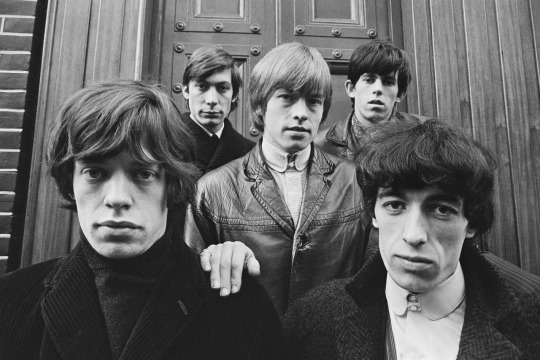
The Rolling Stones was one of many bands that were apart of the “British Invasion” (which was the invasion of British rock in American culture), they fought with The Beatles, The Who, The Kinks, The Animals, and many more for to be considered “The greatest Rock band in the late 60’s”. The Rolling Stones pioneered the way for hard rock as a whole, their work is directly cited to be the beginning of a new generation of rock.
Formation and Early Years

Through the years Mick Jagger and Keith Richards were the backbone of the band, as they met in school when they were younger and became best friends. After they drifted apart for a little while they eventually became friends again in 1960 when they were introduced to each other again from a mutual friend Dick Taylor. Keith and Dick were already in a band called “Little Boy Blue & the Blue Boys”, Mick then decided to join that band to become officially reunited with Keith. Around a year later they met Brian Jones who is the guitarist and vocalist. Brian lived a crazy life as he ran away to Scandinavia when he was 16 and had two kids there, he then eventually came back and started playing with the Ramrods. He then later moved to London where he played in Alexis Korner’s group Blues Inc. He then decided to form his own group and he was able to get in contact with a blues pianist named Ian Stewart. Brian and Ian would play at pubs for some time before going back to Blues Inc. which now had a new drummer Charlie Watts, Mick and Keith would make appearances in the band from time to time also. Eventually Mick became the lead singer for Blues Inc. and the band set off to record its first demo tape. The tape was rejected by EMI so Dick left the band to attend the Royal College of Art, later forming the Pretty Things. Before Dick left the group renamed themselves to “The Rolling Stones”. They performed under their new name at Marquee Club in London on July 12, 1962.
Breakthrough and Success

At the time the current members were Mick, Keith, Ian, a drummer named Mick Avory, and Dick who returned. Dick left again as quickly as he came and was officially replaced by Bill Wyman, Avory also left and later joined the Kinks. The Stones were able to persuade Charlie Watts to join after he had quit Blues Inc. to work at an advertising agency because the band's schedule was too hectic for him. By 1963 the Stones had finally solidified their roster, and for the next eight months they played at the Crawdaddy Club and grew a small fan base there. This attracted Andrew Loog Oldham who would become the Stone’s manager. Andrew did not know much about music but he was really good at promotion, his idea was to make the Stone’s the bad boy version of the Beatles. This caused Ian to be forced out of the band, eventually he did become one of their main roadies and played on their albums and tours until he died in 1985. With the help of Andrew the Stones were able to sign with Decca records and they released their debut single which was a cover of Chuck Berry’s “Come On”.
The single did fairly well and reached 21 on the charts, and the group was able to support it by appearing at many festivals and tours. The Stones kept one releasing cover songs of famous artists and it proved to work as each one would land a higher spot in the charts than the last. In 1964 The Stones released their first album followed by “It’s All Over Now” which went Number One in U.K charts, around this time they started to gain popularity in the States as well.
That summer they toured all over the US and recorded at Chess Records in Chicago. They kept releasing music and they landed another UK number one single with Howlin’ Wolf’s “Little Red Rooster”.
Andrew decided that Mick Jagger and Keith Richards should start to compose their own songs so that they could start to earn more money. So they did just that, releasing their first single “Tell Me” which became their first American Top 40.
They released a few more singles but they did not become superstars until the release of “(I Can’t Get No) Satisfaction” in the summer of 1965.
In 1966 the Stones finally released their first album of all songs that they made themselves, called “Original”.
Challenges and Changes

With all of this success it was bound that something detrimental was going to happen, and in February of 1967 exactly that happened. Both Mick and Keith were arrested for drug possession and three months later Brian was too. Lucky for them they were all just put on probation and were now on heavy watch, at this time the group decided to lay low for a little bit. They started to become more active in early 1968, first order of business was to fire Andrew and hire a new manager named Allen Klein. The band started to produce more edgy music and while all of this was happening Brian Jones was sitting out as he was still dealing with a serious drug problem. On July 3, 1969 Brian left the band claiming that “he had an artistic difference between him and the rest of the group”, almost one month later Brian was found dead in his swimming pool. At the time of Brian’s death he was replaced with Mick Taylor, who did not contribute to many projects. Later on in 1969 they announced another american tour as it had been three years since the last, on this tour they were given the name “The World’s Greatest Rock and Roll Band”.
Altamont Speedway Incident
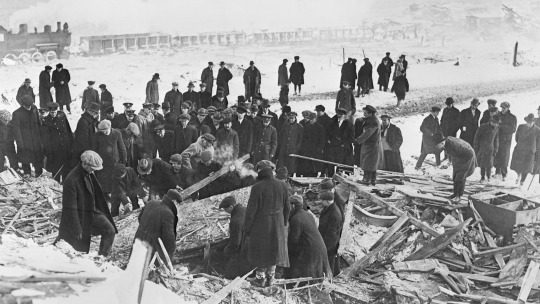
Everything was going great until they decided to do a free concert at the Altamont Speedway, where they hired Hell’s Angels (a biker gang at the time) for security. The show was so unorganized and it got even worse when one member of the security team killed a young black man. The stones faced heavy attacks on their image through the media so they decided to step back from the spotlight for a few years. During their time off they released “Sympathy for the Devil” which some critics claimed cited the violence from their sets.
Later Years and Decline
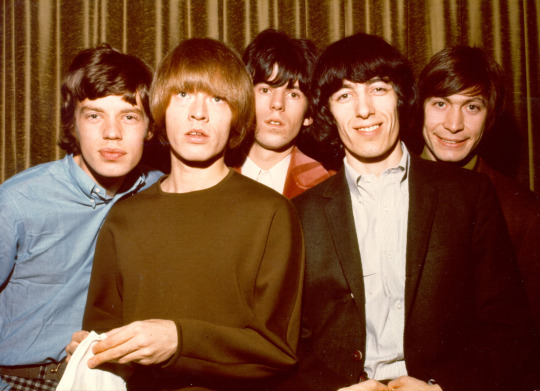
During their break they released one more album under Decca and then would later form Rolling Stones Records, which was under the control of Atlantic Records. Soon after though the band would begin to split as Keith became addicted to drugs, soon after the band would start to fall apart. They released another album called “Goats Head Soup” and even though it did well in both the US and the UK they started to lose their main fanbase.
Mick Taylor would leave shortly after so they started recording their new album while simultaneously hosting tryouts for a new guitarist. They would choose Ron Wood who was the former lead guitarist for The Faces. Just like Mick Taylor, Ron Wood was only featured on a small number of projects. Around this time the stones continued to make projects but none of them really stuck like the old music, even though they were selling out concerts in the 80s-90s their new music was not selling that well.
Legacy
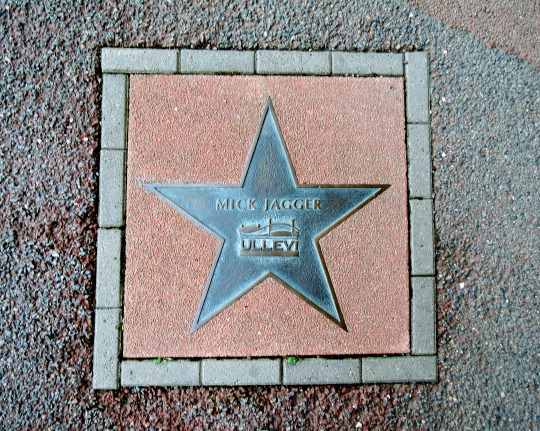
To this day, The Rolling Stones continue to perform, but audiences primarily attend for their classic hits. Their influence on rock and roll remains significant, cementing their status as legends of the genre.
3 notes
·
View notes
Text
Stockholm Week 4: From Northern Lights to Polar Plunging
Core Course Week is the official name of this week. I have been waiting for this week because it was my first trip outside of Stockholm. During the core course week, you travel to another city in Sweden or even another country for three days with classmates and course advisers in your core course. It is a packed schedule full of both academic and cultural activities!
My Engineering Sustainable Environment in Scandinavia course traveled to Umeå in the second half of the week from Wednesday night to Saturday. This post is focused on my time in Umeå!
Before the actual trip, we got a sneak peek of what our academic tours would look like. On Monday, we had an academic visit to Norrenergi's district heating plant in Solna. Looking at the reactors and walking around the plant was very different from reading about the process.
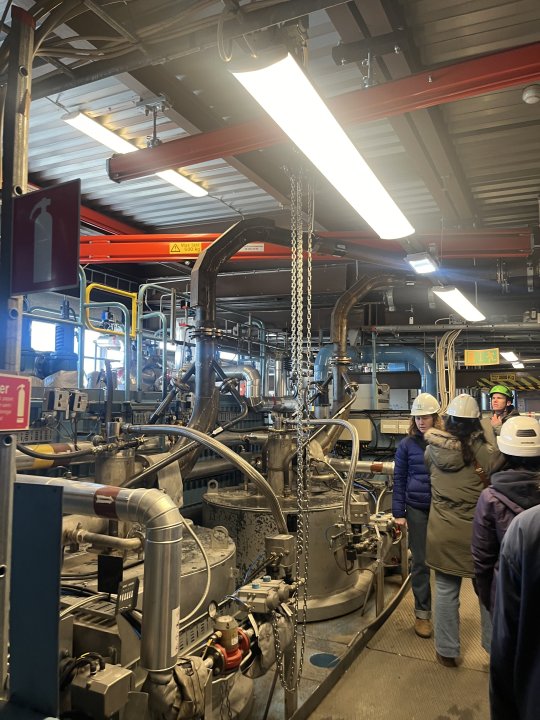

The building was full of rooms that surprised me, just like this (this is wastewater collected in the city). Although it was wastewater, it didn’t smell too bad!
2/7 Wed: Night Train to Umeå
On Wednesday, I packed everything in a carry-on and left for the Central Station at 10 pm.
Taking a night train was on my bucket list. BUCKET LIST! I have been and will be saying this many more times but I am not lying. I’m a month into my studying abroad semester and already checking off several activities on my bucket list!
The train station gave off a Hogwarts vibe and the inside of the train made me think that I was a cast member in the Murder on the Orient Express movie. Two/three of us were each given a triple room to stay the night.


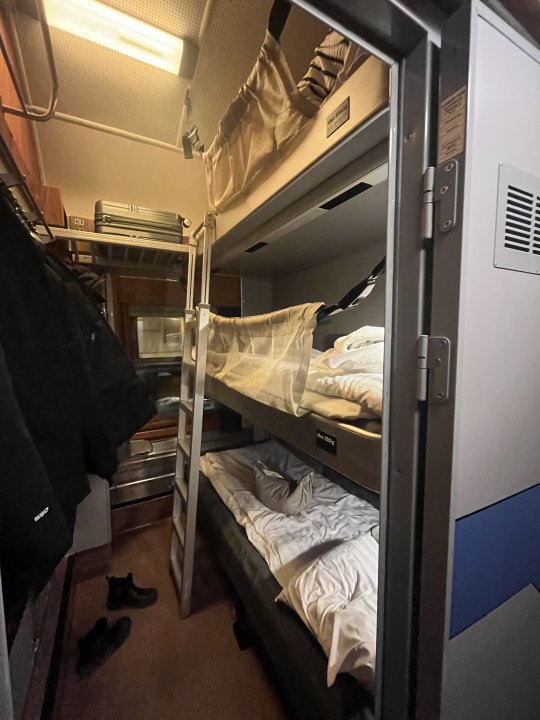


POV from my bed
Although we had to wake up at 7 in the morning, we were too excited to sleep. We talked, took a bunch of photos, and played card games before finally going to bed.

I took the victory in the second round of BS ٩( ᐛ )و
I fell asleep soon, looking forward to what will happen tomorrow.
2/8 Thu: Academic Plant Visits
When we woke up to get ready, the water didn’t come out. It was an experience to wash my face and brush my teeth with a water bottle.
The first thing we did after getting off the train was eating breakfast at Umeå University. It was followed by a series of academic sessions on sustainability and food, as well as coffee substitution and sustainability.
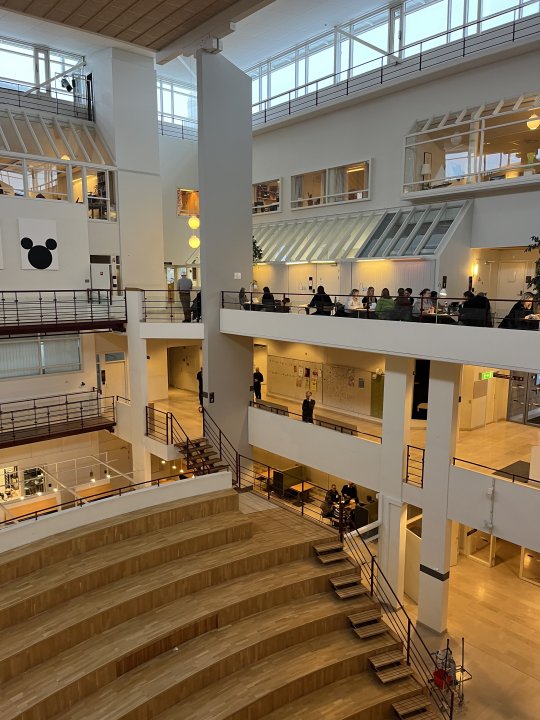
It was such an aesthetic building!
Later in the day, we went on another academic visit to Umeå Energi Heating Plant. The most interesting fact I learned was that plants openly communicate and collaborate without competition because they are in different municipalities. Since they do not have to compete in any way, workers genuinely consult each other and happily share insights on ways to improve their facility and process. It naturally made me think about what makes this possible and how this positive environment can be replicated in the U.S.
We were also given a chance to see the waste bunker and incinerator.
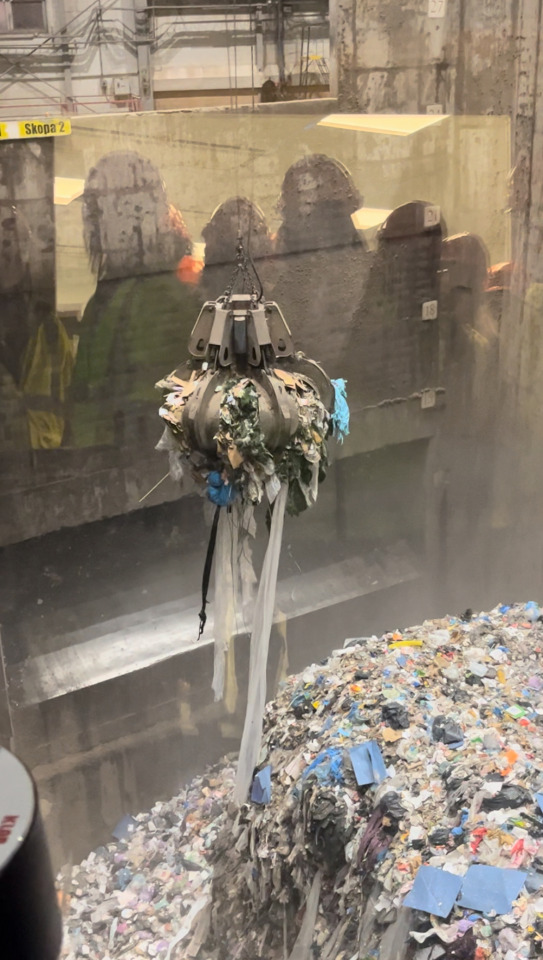
Doesn’t this remind you of Toy Story?
After the two-hour trip, we had a group dinner. The good thing was that it was in a boat.

Boat restaurant! It didn't move though
The bad thing was that it took three hours. THREE hours for dinner! But the long wait let us bond over our various conversations. Besides, the long wait was THE reason why we were able to catch this view of the sky.

There were disputes about what this light is, but I am just going to let myself believe that it was the northern lights with a hint of clouds
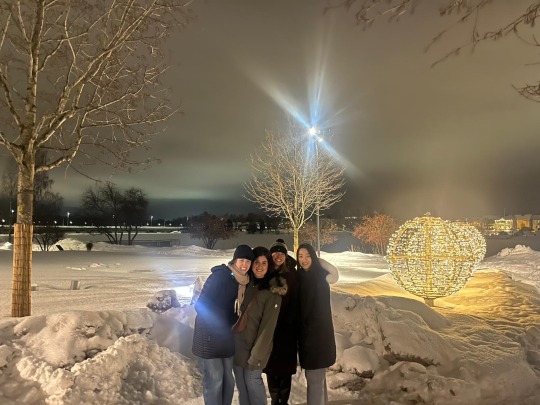
Our attempt in capturing the "Northern Lights"
We were returning to our hotel when we saw the ice castle with slides. Are we college students if we don’t go sledding at night?


As educated students, we made a single file line to take turns going down the slides
The vicinity was full of our laughter and I absolutely loved it. I made another core memory that day :)
2/9 Fri: - Horse Carriage for Northern Lights
I started the day with a breakfast buffet provided by the hotel. Due to the last-minute cancellation of the academic visit at city hall, we finished our breakfast leisurely and had about two hours to wander around the neighborhood. The frozen lake was our destination.

The combination of warm sunlight and flakey snow brought me so much joy. At that moment, I understood why people need to live next to nature. I never knew all I wanted was just to lie down, buried in snow, feeling the warmth of the sunlight.




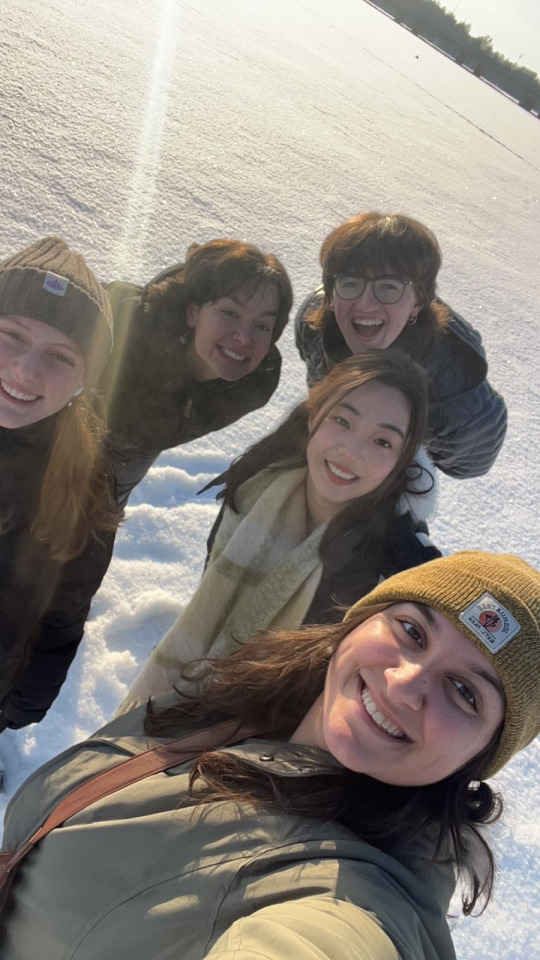
Couldn’t be happier

This was a church next to the lake
Group lunch and the last academic visit at the Vakin Waste Water Treatment plant were next up.

I was holding on to my phone for my dear life because all the floors and stairs had holes in them - I also held on to the rails for my dear life
However, the real fun was waiting for us in the evening.
Finally, it was time for the Northern Lights hunt on a horse carriage. I bundled up, layer after layer, to prepare for the freezing weather in the forest (my two thermal socks were not enough to prevent my toes from freezing).
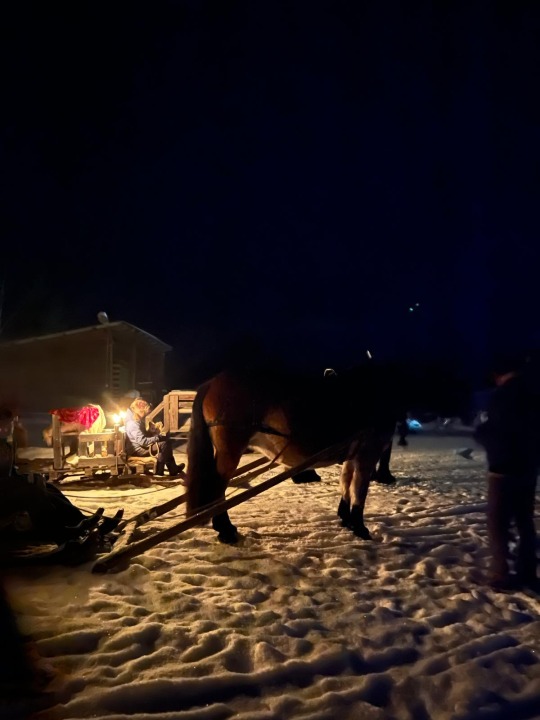

Photo credit to Tia <3 My phone was not good enough to capture the faint light in the pitch-black darkness ;-;
It was still an extraordinary experience even though we didn’t see the northern lights. Fika around the fireplace in the middle of the woods was such a special moment.
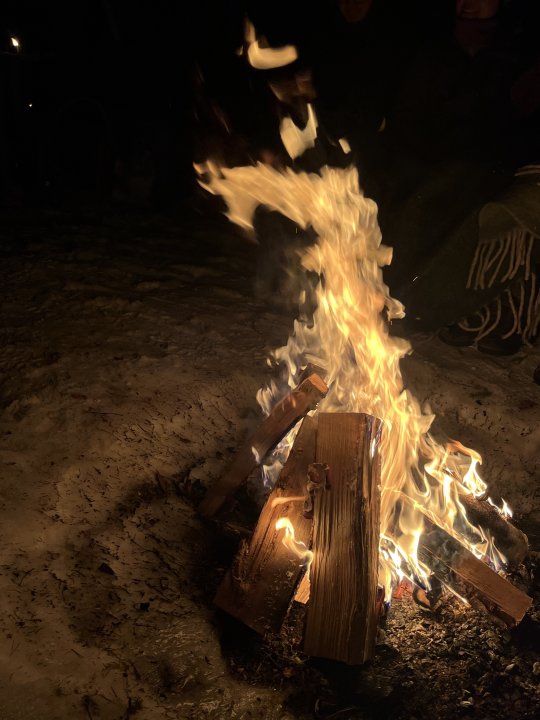
The guide couple's dog made it 1000000 times better. She was SO pretty <3
Afterward, we grabbed a full meal at MAX for dinner. Then we all met in one of our hotel rooms and played games before going out to a pub close by. The nightlife gave us the full experience at Umeå.
2/10 Sat: Polar Plunging and Sauna
The last day of the Umeå trip began with a polar plunge and a sauna. The plunge itself wasn’t bad at all; the worst part of the event was walking on ice bare feet.
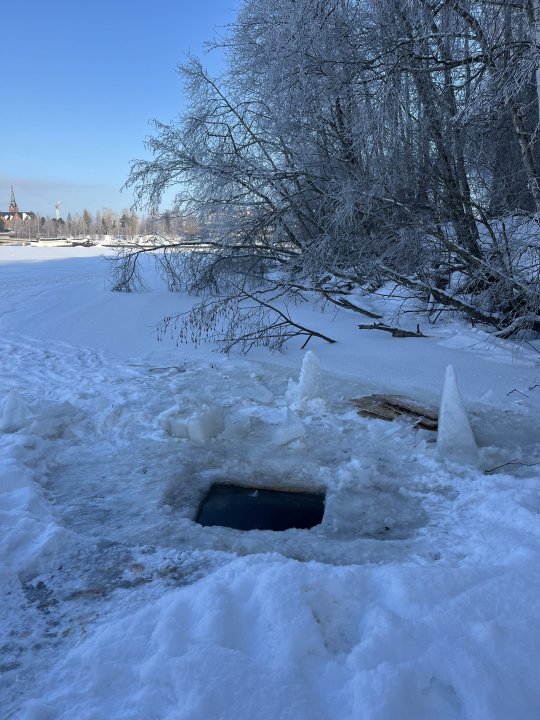
Cold, cold ice (literally) water
The wooden sauna took two hours to reach 40 degrees Celsius, which was just enough to thaw our numb tuckles (credit to you know who).
After the plunge and sauna, I oddly felt warmth inside my body. Before trying it out myself, I doubted the locals when they said the plunge is good for your body and makes you warm all day. In a sense, it was a true cultural experience because I suddenly understood Swedish culture. Freedom to roam, the concept of Lagom (not too much, not too little: just the right amount), and people being reserved for the most part began to make more sense in my mind.


The sun came out as we walked back to the bus destined for our hotel
The short but memorable trip to Umeå ended with a 6-hour train ride back to Stockholm. Even the train ride back felt shorter than what it was. I think it was because I wanted it to last longer.

The train ride back with a beautiful sunset ended the trip on a perfect note.
2/11 Sun: Cafe Hops
As much as I wish this semester was just a casual life abroad, it is called study abroad for a reason. It was time to do my work!
Like a typical college student, I started my work on Sunday. But I’m a student studying abroad, so I met up with my friends to eat brunch and do homework together at cute cafes.
This blog is the last task for me today. It marks the end of my long week. I hope you had a great week as I did!
I’ll see you again next week with new events :)
Hey då,
Jiwoo Kim
Chemical Engineering
DIS Study Abroad in Stockholm, Sweden
2 notes
·
View notes
Text
The wonderful winter weather in Egypt attracts world tourists.

The wonderful winter weather in the Red Sea attracts world tourists Increasing the arrival rates of tourist flights from European countries to the capital of Arab Tourism. Marsa Alam is preparing to receive Poles, Czechs and Italians in large numbers. You can visit Egypt through EGYPT TOURS provided by Cairo top tours.
Hotels in the cities of the Red Sea governorate receive tourists, especially from different European countries, in conjunction with the winter tourist season. So you can also spend just Budget Tour to Cairo and El Ain Sokhna to stay at the Red Sea beach.
For his part, Bashar Abu Taleb, captain of the Red Sea tour guides, said that every year , European occupancy rates rise, as this is the beginning of the winter tourist season. You can book the best trips Cairo and Sharm El Sheikh Budget Tour Package to spend an unforgettable time.
The captain of the tour guides added in special statements on the seventh day that it is expected to increase the arrival rates of German and English flights as well as a number of French flights to Hurghada after a significant drop in temperatures witnessed by those countries. Book your tour now by Cairo and Hurghada Budget Tour Package to try the services of Cairo Top Tours!
He explained that the prices in Egypt are better than the prices in any other way preferred by European tourists. You can book the best trips by EGYPT TRAVEL PACKAGES recommends visiting Egypt sites.
as well as the weather during the winter in Egypt, especially in tourist cities, is much better than in various other countries. There are many EGYPY CHEAP BUDGET TOURS that you should try, whether in Cairo, southern Egypt or even the capital.
For his part, Essam Ali, a tourism expert and a member of the Chamber of tourist facilities, said that there are many European tourists prefer to visit Egypt in the winter. You can book the best trips through EGYPT CLASSIC TOURS with the best prices by Cairo top tours.
stressing that the rates of hotel reservations made it clear that the next season tourist will be better than the previous days. You can visit Egypt by booking Cairo and Alexandria Budget Tour Package to visit the most famous historical places of Egypt.
He added that there is a significant increase in the ratings of international tourism companies in bookings, expecting the arrival of large numbers of Western European tourists to Egypt, specifically to the city of Hurghada and Sharm el-Sheikh. Book your tour now by 5 Days Budget Cairo Tour Package you will enjoy one of our cheapest packages.
The tourism expert demanded that the Ministry of tourism, in coordination with investors, open new tourism markets to increase access rates, especially in markets where few numbers are already reaching Egypt, such as tourists from Scandinavia, as well as other markets that have not reached Egypt, such as the Indian and Chinese markets. Book Budget Cairo Short Break Tour so you can learn about the deep history of Egyptian civilization.
Sameh Juma, deputy chairman of one of the hotel groups in Hurghada, revealed that domestic tourism during the summer had a great advantage in compensating for the deficit in international tourism. You can visit Egypt by booking Budget Cairo 3 Days Stopover Tour to Visit the best sites in Cairo.
Juma predicted that during the current time, given the international bookings during the coming months, there are expectations of a significant increase in hotel occupancy rates from various European countries, and there are expectations of the arrival of Russian flights to Egypt through the airports of Hurghada and Sharm el Sheikh. Spend your holiday with your friends by booking Egypt and the Nile Cruise Budget Tour Package to visit the impressive historical sites of Egypt.
@cairo-top-tours
0 notes
Text
Discover the Wonders of the World with Exclusive Travel Packages
Traveling is not just about exploring new destinations; it’s about creating unforgettable memories, embracing diverse cultures, and experiencing the extraordinary. In a world filled with awe-inspiring places, discovering the wonders of the world has become more accessible and enriching, thanks to exclusive travel packages. These curated experiences are designed to cater to every traveler’s preferences, offering convenience, luxury, and once-in-a-lifetime opportunities. Let’s delve into why exclusive travel packages are the perfect gateway to uncovering the wonders of the world Travel and Tourism Companies in Dubai
Why Choose Exclusive Travel Packages?
Traveling independently can be rewarding, but it often comes with its own set of challenges—from planning itineraries to managing logistics. Exclusive travel packages eliminate these hurdles, providing a seamless experience tailored to your needs. Here are some key benefits:
Expertly Curated Itineraries: These packages are designed by travel professionals who have in-depth knowledge of destinations. They include must-see landmarks, hidden gems, and unique cultural experiences that independent travelers might miss.
Time and Cost Efficiency: With accommodations, transportation, and activities bundled together, you save time and often enjoy better value for money. Group discounts and partnerships with local service providers ensure a cost-effective yet luxurious journey.
Personalized Experiences: Exclusive travel packages cater to diverse interests, whether you’re an adventurer, a history enthusiast, or someone seeking a relaxing getaway. From bespoke tours to culinary experiences, there’s something for everyone.
Stress-Free Travel: With everything planned and arranged, you can focus on enjoying your trip instead of worrying about the details. Professional guides, 24/7 support, and pre-arranged activities ensure peace of mind.
Top Wonders of the World to Explore
The world is home to breathtaking wonders that captivate the imagination. Here are a few iconic destinations to consider for your next adventure:
1. The Great Wall of China
Stretching over 13,000 miles, the Great Wall of China is a testament to human ingenuity and perseverance. An exclusive travel package may include guided tours of restored sections, sunrise hikes, and cultural experiences like calligraphy workshops or traditional Chinese tea ceremonies.
2. Machu Picchu, Peru
Nestled in the Andes Mountains, this ancient Incan city offers breathtaking views and a glimpse into a rich history. Exclusive packages often include private guided tours, luxury train rides on the Hiram Bingham, and accommodations at eco-friendly lodges.
3. Petra, Jordan
The rose-red city of Petra, carved into sandstone cliffs, is a UNESCO World Heritage Site and a marvel of ancient architecture. Exclusive travel options may feature candlelit tours, Bedouin-inspired dining experiences, and explorations of nearby attractions like Wadi Rum.
4. The Pyramids of Giza, Egypt
As one of the Seven Wonders of the Ancient World, the Pyramids of Giza are a must-visit for history buffs. Travel packages might include private tours, camel rides, and a cruise along the Nile River to complete your Egyptian adventure.
5. The Northern Lights, Scandinavia
Witnessing the ethereal beauty of the Aurora Borealis is a bucket-list experience. Exclusive packages can offer stays in glass igloos, guided photography tours, and snowmobile safaris in destinations like Finland, Norway, or Iceland.
Unique Experiences to Enhance Your Journey
Exclusive travel packages are not just about visiting iconic landmarks; they’re about immersing yourself in the essence of a destination. Here are some unique experiences to look for:
Cultural Immersion: Engage with local traditions through cooking classes, dance workshops, or home-stay experiences.
Adventure Activities: From hot air balloon rides over Cappadocia to scuba diving in the Great Barrier Reef, there’s no shortage of thrilling activities.
Wellness Retreats: Combine travel with rejuvenation by opting for wellness-focused packages that include spa treatments, yoga sessions, and nature therapy.
Culinary Journeys: Savor the flavors of a region with gourmet tours, wine tastings, and farm-to-table dining experiences.
Tips for Choosing the Right Package
With countless options available, selecting the perfect travel package can be overwhelming. Here are some tips to help you make the right choice:
Define Your Interests: Identify what excites you most about travel—adventure, relaxation, culture, or a mix of everything—and choose a package that aligns with your preferences.
Research the Provider: Look for reputable travel agencies with positive reviews and a proven track record. Their expertise can make a significant difference in your experience.
Understand Inclusions: Ensure you’re clear about what the package covers, including accommodations, meals, transportation, and activities. This prevents unexpected costs during your trip.
Check Flexibility: Opt for packages that offer customization options, allowing you to add or omit activities based on your interests.
Consider Group Size: Decide if you prefer a private tour for a more intimate experience or a group tour to meet fellow travelers.
Embrace the Wonders of Travel
Exploring the wonders of the world through exclusive travel packages is an enriching and hassle-free way to satisfy your wanderlust. Whether you’re marveling at ancient ruins, soaking in natural beauty, or indulging in cultural experiences, these packages ensure every moment is unforgettable.Start planning your next adventure today and unlock the magic of the world’s most captivating destinations. With the right travel package, the journey of a lifetime is just a booking away travel companies in dubai
0 notes
Text
Student Travel Packages, Student Trips in Europe, and Educational Tour Operators
Travel is one of the most enriching experiences for students, providing opportunities to learn, grow, and explore the world beyond the classroom. This blog dives into three essential topics in the realm of student travel: student travel packages, student trips Europe, and educational tour operators. These areas cater to young adventurers, offering structured, safe, and engaging ways to explore Europe while gaining invaluable life experiences
What Are Student Travel Packages?
Student travel packages are curated itineraries designed specifically for young travelers. These packages provide an affordable and hassle-free way to explore different destinations, with a focus on education, adventure, and cultural exchange.
Key Features of Student Travel Packages:
Budget-Friendly Options: Affordable accommodations, group discounts, and cost-effective transport solutions.
Educational Focus: Incorporate visits to historical sites, museums, and cultural landmarks.
Safety First: Comprehensive travel insurance, 24/7 support, and experienced guides.
Customizable Itineraries: Flexibility to align with academic goals or extracurricular interests.
Popular destinations for student travel packages include:
Italy: Experience the art of Florence, the history of Rome, and the charm of Venice.
France: Marvel at the Eiffel Tower, explore the Louvre, and enjoy the scenic French Riviera.
Germany: Learn about Berlin’s history, explore Bavarian castles, and attend cultural festivals.
United Kingdom: Visit iconic landmarks like Big Ben, Stonehenge, and the universities of Oxford and Cambridge.
Student Trips in Europe
Europe is a dream destination for student trips, offering a blend of history, culture, and adventure. Student trips Europe are designed to provide immersive experiences, combining education with fun and exploration.
Types of Student Trips in Europe:
Cultural Immersion: Dive into local traditions, cuisines, and languages through guided city tours and cultural activities.
Historical Journeys: Visit landmarks like the Colosseum in Rome, the Berlin Wall, and the Palace of Versailles.
Adventure-Focused Tours: Activities like skiing in the Swiss Alps, hiking in Scotland, or cycling through Amsterdam.
STEM and Academic Tours: Explore tech hubs, visit research institutions, or attend science exhibitions.
Benefits of Student Trips:
Global Perspective: Gain insights into different cultures and global issues.
Teamwork and Collaboration: Build bonds with peers through shared experiences.
Practical Learning: See classroom lessons come to life at historical and scientific sites.
Educational Tour Operators
Educational tour operators specialize in organizing trips that combine travel with learning. They cater to schools, colleges, and other educational institutions, offering tailored experiences to meet academic objectives.
Services Offered by Educational Tour Operators:
Curriculum-Based Itineraries: Trips designed to complement academic subjects like history, science, or art.
Logistics Management: Handling everything from transportation and accommodations to meals and entry tickets.
Expert Guides: Knowledgeable guides who provide insights and context at every stop.
Safety Protocols: Ensuring the well-being of students with detailed safety measures and contingency plans.
Popular activities organized by educational tour operators include:
Visiting ancient ruins in Greece to learn about classical history.
Exploring renewable energy projects in Scandinavia.
Attending art workshops in Paris or Florence.
Why Europe Is Ideal for Student Travel
Europe stands out as a top destination for student travel due to its rich cultural diversity, accessible geography, and educational opportunities. Here’s why:
Historical Significance: Europe’s landmarks offer a glimpse into centuries of human history.
Cultural Diversity: Each country has unique traditions, cuisines, and languages to explore.
Educational Value: Museums, universities, and historical sites provide endless learning opportunities.
Safety and Accessibility: Europe is well-connected by trains, planes, and buses, making travel convenient and secure.
Tips for Choosing the Right Travel Package or Operator
Selecting the right travel package or educational tour operator is crucial for a successful trip. Here are some tips:
Research Thoroughly: Read reviews, compare options, and check the operator’s credentials.
Ask About Customization: Ensure the itinerary can be tailored to meet specific educational goals.
Check Safety Standards: Look for operators with robust safety protocols and 24/7 support.
Budget Transparency: Confirm that the pricing includes all costs, with no hidden fees.
Final Thoughts
Traveling as a student is a transformative experience, offering opportunities to learn, grow, and create lasting memories. Whether you choose a student travel package, embark on student trips Europe, or collaborate with experienced educational tour operators, the journey is sure to be enriching and unforgettable.
Europe, with its blend of history, culture, and modernity, is the perfect classroom for young minds. By partnering with reliable travel providers, students can focus on exploring, learning, and making the most of their adventures, while the logistics are expertly handled. Start planning your European journey today, and open the door to a world of discovery!
0 notes
Text
The Ultimate Customized Europe Tour Package

Exploring Europe is a dream for many travellers. Its rich history, diverse cultures, and stunning landscapes are a sight worth watching. But why settle for a cookie-cutter itinerary when you can craft a customized europe tour packagethat includes everything on your bucket list?
If you’re a history buff, a foodie, or an adventure seeker, a personalized European journey ensures you experience the continent exactly as you’ve imagined.
Here’s how you can create the best europe tour packages.
Why Choose a Customized Tour Package?
A customized tour package offers the flexibility and personalization that traditional group tours often lack. Here’s why it’s worth considering:
Tailored Itinerary: Focus on destinations and activities that match your interests and skip those that don’t.
Flexible Schedule: Adjust your pace, whether you prefer a whirlwind tour or leisurely exploration.
Exclusive Experiences: Gain access to private tours, unique accommodations, and hidden gems.
Cost Control: Allocate your budget to the aspects of the trip that matter most to you.
Planning Your Customized Europe Tour
List Your Bucket-List Destinations Start by identifying the cities and landmarks you’ve always dreamed of visiting. Whether it’s the Eiffel Tower in Paris, the canals of Venice, or the fjords of Norway, jot down your must-see spots.
Define Your Travel Style Are you looking for luxury accommodations, boutique hotels, or budget-friendly options? Do you prefer guided tours or exploring independently? Your travel style will shape your itinerary.
Consider Seasonal Highlights Europe’s charm varies with the seasons. Visit the Christmas markets in Germany during winter, enjoy Mediterranean beaches in summer, or witness Holland’s tulip fields in spring.
Incorporate Unique Experiences Add activities that align with your interests, such as:
Food and Wine Tours: Savor French cuisine, sample Italian wines, or indulge in Belgian chocolates.
Cultural Immersion: Attend a Flamenco show in Spain, visit historic castles in Scotland, or explore ancient ruins in Greece.
Outdoor Adventures: Hike the Swiss Alps, kayak along Croatia’s coastline, or ski in the Austrian Alps.
Choose Transportation Options Decide how you’ll travel between destinations. Options include:
High-speed trains, such as the Eurostar or TGV.
Regional flights for longer distances.
Private car hire for scenic road trips.
Contact tour and travel operators in indiafor further details on price and customized tour Itinerary
Conclusion:
A customized Europe tour package allows you to turn your travel dreams into reality. It’s an opportunity to immerse yourself in the destinations you’ve always wanted to visit, at your own pace and style. Whether you’re sipping wine in Tuscany, marveling at the Northern Lights in Scandinavia, or exploring medieval villages in Eastern Europe, your journey will be uniquely yours. Europe is a continent of endless possibilities, and a customized tour package ensures you experience it your way. Start planning your trip today, and get ready to create memories that will last a lifetime. With careful planning and a personalized itinerary, your dream European adventure awaits!
0 notes
Text
Luxury Europe Tour Packages: What to Expect with Switrus Holidays
Embarking on a Europe tour is a dream for many, and with Switrus Holidays, that dream is elevated to a luxurious reality. From world-class accommodations to exclusive experiences, luxury Europe tour packages redefine travel. Whether you’re traveling from Bangalore or any other city, Switrus Holidays ensures that your European adventure is as seamless as it is indulgent.
Tailored Itineraries with Premium Comfort
Switrus Holidays' Europe tour packages are thoughtfully designed to combine iconic landmarks with personalized touches. The itineraries strike a balance between must-visit destinations like Paris, Rome, and Amsterdam, and hidden gems tailored to your preferences.
Travelers opting for Europe tour packages from Bangalore can enjoy well-coordinated group departures, eliminating the stress of planning and logistics. Every detail, from airport transfers to guided tours, is handled with precision.
Luxury Accommodations
Imagine staying in a charming villa overlooking the Tuscan hills, or a five-star hotel in the heart of London. With Switrus Holidays, premium accommodations are standard. Each property is carefully selected for its comfort, location, and unmatched service, ensuring you unwind in style after a day of exploration.
Exclusive Culinary Experiences
Food is a highlight of any Europe tour, and Switrus Holidays ensures your taste buds are treated to the finest.
Michelin-Starred Dining: Savor gourmet meals crafted by Europe’s top chefs.
Local Delicacies: Indulge in authentic flavors, from Swiss chocolates to Italian gelato.
Wine Tastings: Explore renowned vineyards in France and Italy, sampling some of the world’s best wines.
Private Guided Tours
Luxury travel is all about exclusivity, and Switrus Holidays delivers with private guided tours. Instead of navigating crowded tourist spots, enjoy personalized experiences led by expert guides.
Skip-the-Line Access: Save time with priority entry to iconic landmarks like the Eiffel Tower and the Vatican.
Cultural Immersion: Discover the stories and traditions of each destination through curated experiences.
Luxury Transportation
Traveling in Europe should be as enjoyable as the destinations themselves. With Switrus Holidays, you’ll experience:
First-Class Train Journeys: Glide through picturesque landscapes aboard the Eurostar or Swiss Glacier Express.
Private Transfers: Enjoy the convenience of chauffeur-driven luxury vehicles.
Luxury Cruises: Explore Europe’s rivers and coastlines in style.
Unforgettable Experiences
Switrus Holidays goes beyond typical sightseeing to create once-in-a-lifetime moments:
Hot Air Balloon Rides: Soar above Cappadocia or Tuscany for breathtaking views.
Northern Lights Adventures: Witness the magic of the auroras in Scandinavia.
Opera Nights: Attend an opera or concert in Europe’s iconic venues like Vienna’s State Opera.
Why Choose Switrus Holidays?
Switrus Holidays has earned a reputation for delivering exceptional Europe tour packages that cater to discerning travelers. Here’s why they stand out:
Expertise: Decades of experience in crafting luxurious European itineraries.
Customer Focus: Every package is designed with your comfort and preferences in mind.
Convenient Departures: Exclusive Europe tour packages from Bangalore, ensuring ease of travel for South Indian travelers.
A Hassle-Free Booking Process
Booking with Switrus Holidays is simple and stress-free. Whether you're planning a romantic getaway, a family vacation, or a group tour, their team takes care of all the details, from visas to travel insurance.
Conclusion: Indulge in the Best of Europe with Switrus Holidays
A luxury Europe tour isn’t just about traveling; it’s about creating unforgettable memories. With Switrus Holidays, every moment of your journey is curated to perfection, from lavish stays to immersive experiences.
Whether you’re starting your journey from Bangalore or elsewhere, their Europe tour packages ensure a seamless, luxurious, and unforgettable adventure.
Ready to experience Europe like never before? Visit Switrus Holidays today and let the journey of a lifetime begin!
0 notes
Text
One of the worlds oldest amusement parks. Tivoli dates from 15 August 1843, when Georg Carstensen first opened the park after being granted permission by the King. Originally it consisted of exotic and enchanting gardens that amongst other visitors so impressed one Hans Christian Anderson that he was inspired to write the fairytale, the Nightingale. 1844 The Tivoli Boys Guard Constantly on the lookout for new ideas, Carstensen introduced the Honorary guard. From small beginnings this grew to not only become a cultural icon, but also evolved into a musical education centre for children. Carstensen sadly only ran the park for five years. Leaving in 1848 when he enlisted to fight in the war against Prussia. This led to him being fired by the Tivoli board citing breach of contract. On his return to Denmark in 1857 he founded a rival park at Alhambra in Frederiksberg in competition with Tivoli. He didn't actually get to see this one in operation, dying from pneumonia at the age of 44. 1874 The Peacock Theatre Erected in 1874 the current theatre is the oldest building in the park, and protected by law. A bit like our listed buildings. The theatre has the motto "Shared joy with the people", engraved above the stage in Chinese letters. Hans Lumbye, the composer was in charge of the music from the start of the park. A violinist and prolific composer, he put together some 800 pieces of music. Known in some places as the 'Strauss of the North', he composed the world famous Champagne Galop. Touring with his orchestra during the Winter months, he sadly died the same year the theatre opened. The Restaurant WIVEL, later called Wivex became a notorious water hole for a group of infamous First World War profiteers. Later the national broadcaster used it to broadcast dinner concerts. Eventually it closed in the 1960's. Willem Van De Poll 1914 Tivoli Roller Coasters Tivoli had a roller coaster in 1842, a seven second thrill ride. In 1914, the new coaster was opened. Called Rutschebanen (or roller coaster in English), this is still operating today, making it one of the oldest wooden coasters in existence. Up until the installation of moderner cars, it actually had brakemen riding in each car to slow it on turns and downhill. Sabotage During World War Two, the park suffered two unfortunate instances of sabotage, when pro Nazi Danes snuck into the park after it closed and planted a number of fire bombs. Extensive damage was caused and the park was closed for two weeks whilst the damage was rectified. 1951 Walt Disney Visits The first Disneyland was opened in California in 1955. Walt Disney, its founder paid a number of visits to the Tivoli park in 1951. He enjoyed the ambience of the park and was hoping to impart something similar to his own park. Today the park has in excess of four million visitors per year. Making it the second most visited seasonal amusement park in the world, and the biggest in Scandinavia. Resources; Tivoli Park Read the full article
0 notes
Text
Group Tours Scandinavia
Are you ready for the adventure of a lifetime? Look no further than inspiring vacations! Are you dreaming of exploring the breathtaking landscapes and vibrant cultures of South Africa? Our guided tours of South Africa will take you on an unforgettable journey, immersing you in this incredible destination's rich history and diverse wildlife. From the majestic Table Mountain to the iconic Kruger National Park, our expert guides will ensure you don't miss a single highlight. But that's not all! Have you ever wanted to witness the stunning beauty of Scandinavia? Our group tours Scandinavia will introduce you to the enchanting fjords, charming cities, and captivating Northern Lights. With Inspiring Vacations, you can embark on a once-in-a-lifetime adventure that will leave you with memories to last a lifetime. Don't wait any longer; book your guided tour today and let us inspire your next vacation!
0 notes
Text

Rev. Jessy Dixon (March 12, 1938 – September 26, 2011) was a gospel music singer, songwriter, and pianist, with success among audiences across racial lines. He garnered seven Grammy award nominations during his career.
Musicians with whom he worked include Paul Simon, Andrae Crouch, DeGarmo & Key, and most recently Bill Gaither in the Homecoming series of concerts. He wrote songs for Amy Grant, Natalie Cole, Cher, and Diana Ross.
He was an ordained minister with Calvary Ministries International of Fort Wayne, Indiana.
Born in San Antonio, he sang and played his first song at the age of five. He was discovered by James Cleveland, one of the first artists to sing and record Jessy Dixon’s compositions, “God Can Do Anything But Fail,” and “My God Can Make A Way.” The organizers of the Newport Jazz Festival invited him to perform his new song, “The Wicked Shall Cease Their Troubling,” at New York’s Radio City Music Hall. He and The Jessy Dixon Singers were requested to do four encores.
He found himself touring with Paul Simon across the US, France, Canada, Scandinavia, Israel, and Japan. His affiliation with Simon lasted eight years, during which time he recorded two albums, Paul Simon in Concert: Live Rhymin’ and Still Crazy After All These Years, both of which sold a million copies. A later collaboration with Simon took place for Wartime Prayers, a song that appeared on Paul Simon’s 2006 Surprise album.
Bill and Gloria Gaither invited him to sing at a Homecoming video taping. He was a favorite on the series, and has traveled all over the United States and abroad surprising gospel audiences with his stirring performances of “It’s A Highway To Heaven,” “Operator”, “Leaving On My Mind”, “Blood Bought Church”, “The Wicked Shall Cease Their Troubling”, “Lord Prepare Me To Be A Sanctuary”, and “I Am Redeemed”. He performed in the show, Black Nativity with The Jessy Dixon Theater Group. #africanhistory365 #africanexcellence
1 note
·
View note
Text
Explore Europe with Europa World Travels: Unforgettable NRI Group Tours
Are you a Non-Resident Indian (NRI) dreaming of exploring the enchanting landscapes, historic landmarks, and cultural wonders of Europe? Look no further! Europa World Travels offers exclusive NRI Europe Group Tours, designed to provide you with an unforgettable journey through the heart of Europe. With our carefully curated itineraries, top-notch services, and deep understanding of NRI preferences, we ensure that your European adventure is not only seamless but also extraordinary.

Why Choose Europa World Travels for Your NRI Europe Tour?
1. Tailored Itineraries for NRIs: We understand that NRIs have unique preferences and requirements when it comes to travel. Our tours are meticulously crafted to include activities, destinations, and experiences that resonate with the Indian diaspora. From visiting iconic landmarks to indulging in local cuisines, our itineraries strike the perfect balance between exploration and comfort.
2. Hassle-Free Travel Experience: Traveling to a new continent can be daunting, but with Europa World Travels, you can leave all your worries behind. Our team takes care of every detail, from visa assistance and flight bookings to accommodation and local transportation. All you need to do is pack your bags and get ready for an adventure of a lifetime.
3. Experienced Guides: Our knowledgeable and friendly guides are well-versed in the history, culture, and traditions of Europe. They provide insightful commentary, answer your queries, and ensure that you make the most of your journey. Their expertise adds an extra layer of depth to your travel experience, making it both educational and enjoyable.
4. Diverse Destinations: Europe is a continent of diverse landscapes, each offering its own unique charm. Our NRI Europe Group Tours cover a wide range of destinations, from the romantic streets of Paris and the historic sites of Rome to the picturesque canals of Amsterdam and the vibrant nightlife of Barcelona. Whether you're interested in art, history, nature, or adventure, we have something for everyone.
5. Authentic Cultural Experiences: One of the highlights of our tours is the opportunity to immerse yourself in the local culture. Participate in traditional European festivals, savor authentic regional dishes, and interact with locals to get a true taste of European life. These experiences create lasting memories and deepen your appreciation for the places you visit.
Highlighted NRI Europe Group Tours
1. The Classic European Odyssey: This comprehensive tour takes you through some of Europe's most iconic cities. Explore the timeless beauty of Paris, the grandeur of Rome, the artistic flair of Florence, and the historic charm of London. Each city offers a unique blend of history, culture, and modernity, making this tour a perfect introduction to Europe.
2. Enchanting Eastern Europe: Discover the lesser-known gems of Eastern Europe with this enchanting tour. Visit the fairy-tale cities of Prague and Budapest, marvel at the architectural wonders of Vienna, and experience the rich cultural heritage of Krakow. This tour offers a glimpse into the diverse and vibrant cultures of Eastern Europe.
3. Mediterranean Magic: Experience the sun-soaked beauty of the Mediterranean with this magical tour. Relax on the pristine beaches of the French Riviera, explore the ancient ruins of Athens, and savor the delectable cuisine of Barcelona. This tour is perfect for those seeking a mix of relaxation and exploration.
4. Scandinavian Splendor: Embark on a journey through the stunning landscapes of Scandinavia. Witness the breathtaking fjords of Norway, explore the charming streets of Copenhagen, and experience the modernity of Stockholm. This tour is ideal for nature lovers and those seeking a unique and serene travel experience.

How to Book Your NRI Europe Group Tour
Booking your dream European tour with Europa World Travels is simple and convenient:
Visit Our Website: Head over to Europa World Travels and browse through our extensive range of NRI Europe Group Tours. Each tour page provides detailed information about the itinerary, inclusions, and pricing.
Choose Your Tour: Select the tour that best suits your interests and schedule. Whether you prefer a classic European journey or an off-the-beaten-path adventure, we have a tour for every traveler.
Contact Us: Reach out to our friendly customer support team for any queries or assistance with the booking process. You can contact us via phone, email, or our online chat service.
Book Your Tour: Once you've made your decision, proceed with the booking through our secure online platform. We offer flexible payment options to make the process smooth and hassle-free.
Prepare for Departure: After booking, you'll receive a detailed itinerary, packing tips, and other essential information to help you prepare for your trip. Our team will be available to assist you every step of the way.
Final Thoughts
Embark on a journey of a lifetime with Europa World Travels' NRI Europe Group Tours. Whether you're traveling solo, with family, or with friends, our tours promise an enriching and memorable experience. Explore the beauty and diversity of Europe while enjoying the comforts and conveniences tailored to your needs as an NRI. Book your tour today and get ready to create unforgettable memories in the heart of Europe.
For more information and to book your tour, visit Europa World Travels now!
We’d love to connect with you on social media, and are active on Facebook and Instagram
#NRI Europe Tours#Europe Group Tour#Book NRI Europe Group Tour#NRI Europe Group Tour#Unforgettable NRI Group Tours
0 notes
Text
Akershus Castle and Vigeland Sculpture Park
After lunch, we explored Akershus Castle, located on the fortress grounds. The castle offered a great audio tour that explained various parts of its history and architecture.
The castle sits atop a hill to protect Oslo's harbor.

View of the harbor in the background from the to of the castle wall.

The inner courtyard of the castle.

A knight in shining armor.

The dungeon was located in the basement of the castle, and it’s certainly not a place where you would want to spend a lot of time.

Later in the afternoon, we took a tram to Vigeland Sculpture Park. Although it's located in another part of the city, it only took us about 30 minutes to get there by tram and walking.
Vigeland Sculpture Park is a part of Frogner Park, Oslo’s largest park spanning over 110 acres of beautiful lush green grounds. Frogner Park is the most visited tourist attraction in Norway. The picture below is Frogner Park with the Vigeland Sculpture Park in the distance.

Vigeland Sculpture Park is an open-air museum that houses Gustav Vigeland's life work, comprising over 200 sculptures in granite, bronze and wrought iron. All of Vigeland’s statues depict naked human beings of different ages, sexes and sizes, stuck in different and sometimes interesting poses.


Below is four naked guys holding up a bowl that has water overflowing from it.

Below is a picture of “The Monolith”, the centerpiece of the park surrounded by 36 groups of granite statues. It is a towering structure made from a single piece of granite, standing about 50 feet tall. It is carved with 121 naked figures, intricately intertwined. Three stone carvers worked daily for 14 years, to cut Vigeland's full-size plaster model into the final 180-ton, 50-foot-tall erection. It was completed in 1943.

Here is more details on The Monolith:
After visiting the park, we returned to the harbor where we had dinner at Olivia Aker Brygge, an Italian restaurant that overlooks the harbor. We had penne pasta with creamy tomato sauce, chicken, bacon and peperoncino, and a marinated chicken breast salad with pancetta and sun dried tomatoes. The food was good, but not great. In my opinion, you don’t come to Scandinavia for great food.
1 note
·
View note
Text
I have turned in my car and am cozy in my hotel in rainy Tallinn, finishing up a book I picked up yesterday in Tartu - review likely coming soon. This morning, I went to the Estonian National Museum, which I've heard was THE thing to do in Tartu. Since I did have a time limit (my car was due to turn in two hours north), I asked the front desk which exhibition to target. He echoed what I had read online as a must-see, The Echo of Urals.
This exhibit detailed the culture of various groups of people throughout Northern Russia, the Baltics, and Scandinavia. The thread that ties them all together is not their genetics, but their LANGUAGE. Linguists and historians discovered that these cultures' languages are all related in both semantics and structure, which implies a historical connection between them. With my Master's in Communication Sciences/Disorders, I found this FASCINATING.
There was a very neat interactive language tree at the beginning.
It then had set ups for four different areas, including cases showing how they dressed, some replicas of dwellings and saunas, and the tools they used. Most of the pictures I took were of text for me to read through later. I'm the kind of museum-goer that likes to really closely go through everything but with my limited time, I had to make do with snippets and pictures for myself later... I got a few cool pictures, though!








That's all my pictures/travel commentary. From here on out, I'm going to yap about my observations of language usage I've made during this trip. No more pictures, so this is your warning to stop reading if you're not interested in my yapping.
I had noticed some tour guides and locals speak of the historical and linguistic ties that the Baltic Countries have and how they aren't consistent throughout all three countries. Whereas Lithuanian and Latvian have closer linguistic ties, Estonia and Latvia have closer historical ties. The main one I learned about was the medieval history of Latvia and Estonia. I kinda nodded and wondered about it, but it wasn't until this exhibition that it clicked. Language usage over here is hugely significant, I'd argue more so than in my home country of the USA.
One observation I had immediately was how most people in these countries are at least bilingual, if not trilingual, or even more. Usually, it is a mix of the national language (Lithuanian, Latvian, or Estonian), English, and Russian. Lithuania has a number of Polish speakers, and Estonia has a number of Finnish speakers as well. Most kiosks and menus are in at least three or four languages.
The second was all that I've learned about the history of language usage/how much of a theme it is in its literature. As I had mentioned before, written Lithuanian was banned under Tsarist Russia. The book I read was an illegally published Lithuanian story that was published in America.
Latvian did not have the same ban (from what I understand), but for much of its history, German or Russian were the languages of business, education, and power. The first short story from the Latvian book I read heavily featured the importance for the main character's son learning German to secure a financially secure job.
The statues in Tartu, Estonia, consistently memorialized the scientists, writers, and professors who introduced their work into the Estonian language rather than Russian, German, or any other. The Estonian book I just finished is of a Russian woman who mentioned that she felt ostricized for her language as "the younger generation doesn't know it and the older generation refuses to speak it." The languages her daughter speaks are Estonian, English, a little Finnish, and some Russian with her mother.
It is so fascinating to me to watch an area of polyglots just polyglotting around. In America (at least in my part of it), there is usually just English and Spanish. The Spanish speaking population is significant, and similarly, packages and public transit tend to use both English and Spanish, but the languages feel largely separated. You can expect to hear Spanish in the Hispanic neighborhoods and some among families around in public, but the default is English everywhere else. Additionally, English and Spanish are not native languages in the US. They're languages brought over from across the seas. Native languages of the US are very rare nowadays and are largely limited to households and government designated reservations....
But I don't want to get too serious here. These are simply the observations of my home compared to this land foreign to me. One thing that coming here has done, funnily enough, is inspire me to really focus on learning Spanish more seriously. As my family language, the one that would be most helpful in my career, and the second most used language in my country, there really is no reason for me not to know it. I've been planning how I want to study and practice among friends. Perhaps the rest of my summer will go to that project...
The next two nights are here in Tallinn. Thursday morning, take a ferry to Helsinki, where I meet up with a friend! Yes, the same friend who saved my ass 10 days ago when Visa failed me! I look forward to it, but I am more than a little sad that my time here in the beautiful Baltics is coming to an end. It has truly been a fantastic trip.
1 note
·
View note
Text
The Role of Educational Tour Operators and Student Travel Packages in Europe
The travel and tourism industry caters to a diverse audience, including students, educators, and leisure travelers. Among the key segments are educational tour operators, student travel packages, and student trips Europe, which collectively offer unique travel solutions tailored to academic and cultural enrichment. This blog explores their roles, benefits, and contributions to the global travel ecosystem.
What Are Educational Tour Operators?
Educational tour operators are specialized agencies or professionals who organize and manage travel programs for students and academic institutions. They focus on creating itineraries that combine learning, exploration, and cultural immersion.
Key Responsibilities of Educational Tour Operators:
Custom Itineraries: Designing trips aligned with educational goals and academic curricula.
Logistics Coordination: Managing transportation, accommodations, and site visits.
Safety and Support: Ensuring the safety of student groups and providing on-ground support.
Cultural Experiences: Including activities that foster a deeper understanding of local traditions and history
Benefits of Hiring Educational Tour Operators:
Expertise in Academic Travel: They understand the unique needs of student groups and educators.
Cost Efficiency: Bulk bookings and partnerships with local vendors ensure affordable travel.
Hassle-Free Planning: Operators handle all logistics, allowing educators to focus on teaching and mentoring.
Student Travel Packages: Affordable and Enriching Experiences
Student travel packages are curated travel plans designed to provide affordable, enjoyable, and educational experiences for student groups. These packages cater to a wide range of interests, from history and art to science and adventure.
Features of Student Travel Packages
Budget-Friendly Options: Tailored to meet the financial constraints of students and institutions.
Educational Itineraries: Including visits to museums, historical landmarks, and cultural sites.
Group Discounts: Special rates for group bookings make these packages cost-effective.
Popular Destinations for Student Travel:
London, UK: Explore the British Museum, Tower of London, and Shakespeare’s Globe.
Athens, Greece: Discover ancient ruins like the Parthenon and Acropolis.
Amsterdam, Netherlands: Learn about Anne Frank’s story and explore world-class art museums.
Prague, Czech Republic: Experience medieval architecture and vibrant cultural history
Student Trips Europe: Combining Adventure and Learning
Student trips Europe offer immersive travel experiences that blend education, adventure, and cultural exploration. These trips are designed to inspire students while providing opportunities for personal and academic growth.
Why Choose Student Trips in Europe?
Cultural Immersion: Students interact with locals, try regional cuisines, and participate in traditional activities.
Adventure Opportunities: Many trips include activities like hiking, skiing, or cycling to cater to adventurous spirits.
Interdisciplinary Learning: Combining history, art, science, and geography for a holistic experience
Examples of Themed Student Trips:
Historical Tours: Visit sites like Normandy’s beaches, Auschwitz in Poland, and the Roman Forum in Italy.
STEM-Focused Tours: Explore CERN in Switzerland, the Natural History Museum in London, and renewable energy projects in Scandinavia.
Cultural and Culinary Tours: Learn traditional cooking in Italy or explore flamenco culture in Spain.
Collaboration Between Tour Operators and Educational Institutions
The collaboration between educational tour operators, student travel packages, and student trips Europe creates a seamless experience for academic groups. Here’s how they work together:
Curriculum Integration: Trips are designed to complement classroom learning with real-world experiences.
Workshops and Seminars: Operators often include interactive sessions to enhance learning outcomes.
Comprehensive Support: From pre-departure briefings to on-trip assistance, operators ensure a smooth journey.
Benefits of Student Travel in Europe
Global Perspective: Students gain exposure to different cultures, broadening their understanding of the world.
Skill Development: Travel fosters adaptability, teamwork, and problem-solving abilities.
Lifelong Memories: Experiences shared with peers create lasting bonds and unforgettable moments.
Trends in Educational Travel
The educational travel industry is evolving, driven by technological advancements and a focus on sustainability. Key trends include:
Virtual Enhancements: Incorporating virtual reality tours and digital guides for enriched experiences.
Eco-Friendly Travel: Promoting sustainable practices, such as carbon-neutral trips and eco-conscious accommodations.
Customized Learning: Tailored trips that address specific academic or extracurricular goals.
Conclusion
Whether it’s organizing a historical tour or planning an interdisciplinary trip, educational tour operators, student travel packages, and student trips Europe are essential in bridging the gap between academics and real-world learning. Their expertise ensures enriching, safe, and memorable experiences for students, fostering growth and curiosity. For schools, colleges, and universities, these services provide an invaluable platform for exploring Europe’s rich history, culture, and innovation.
0 notes